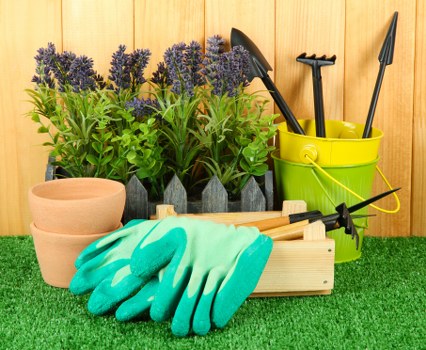Spot Cleaner in Home Cleaning

Maintaining a pristine home involves numerous cleaning tasks, from sweeping floors to dusting surfaces. One of the most critical aspects of home maintenance is dealing with spills and stains promptly and effectively. This is where a spot cleaner becomes an indispensable tool in your cleaning arsenal.
A spot cleaner is specifically designed to target and eliminate localized stains on various surfaces. Whether it's a red wine spill on the carpet, ink marks on upholstery, or a grease stain on your kitchen countertop, a spot cleaner can handle it all with ease.
Understanding how to use a spot cleaner correctly can significantly enhance the cleanliness and longevity of your home furnishings. In this article, we will delve into the importance of spot cleaners, different types available, and best practices for achieving spotless results.
What is a Spot Cleaner?

A spot cleaner is a specialized cleaning product or device designed to address specific stains and spills. Unlike general-purpose cleaners, spot cleaners focus on treating small, concentrated areas without affecting the surrounding material.
Spot cleaners come in various forms, including sprays, gels, and handheld devices. They contain concentrated cleaning agents that break down and remove stubborn stains effectively.
Using a spot cleaner ensures that you can tackle unexpected messes quickly, maintaining the aesthetic appeal and hygiene of your home environment.
Key Features of Spot Cleaners:
- Targeted Cleaning: Designed to focus on specific areas affected by stains.
- Versatility: Suitable for various surfaces like carpets, upholstery, fabrics, and hard surfaces.
- Ease of Use: Convenient application methods for quick and efficient cleaning.
- Effective Formulations: Contains ingredients that break down different types of stains.
Types of Spot Cleaners

Choosing the right type of spot cleaner depends on the nature of the stain and the surface you intend to clean. Here are the most common types of spot cleaners available:
Spray-Based Spot Cleaners
Spray-based spot cleaners are versatile and easy to apply. They are ideal for treating liquid spills like coffee, juice, or wine. Simply spray the cleaner onto the affected area, let it sit for a few minutes, and then blot with a clean cloth.
Gel Spot Cleaners
Gel spot cleaners are thicker in consistency, making them perfect for sticky or oily stains. They are commonly used on upholstery and carpets, where a deeper clean is required.
Foam Spot Cleaners
Foam spot cleaners expand upon application, allowing for better penetration into fabrics and carpets. They are effective in lifting dirt and stains without leaving excess moisture behind.
Handheld Spot Cleaners
Handheld spot cleaners are devices that provide a more targeted and mechanical approach to removing stains. They often include brushes and suction capabilities, making them suitable for tougher stains.

Benefits of Using Spot Cleaners
Incorporating spot cleaners into your home cleaning routine offers numerous advantages:
Time Efficiency
Spot cleaners allow you to address stains immediately, preventing them from setting in. This proactive approach saves time in the long run by reducing the need for extensive cleaning sessions.
Cost-Effective
Investing in a good spot cleaner can prolong the life of your home furnishings, reducing the need for replacements and repairs.
Maintains Aesthetics
Regular use of spot cleaners keeps your surfaces looking new and well-maintained, enhancing the overall appearance of your home.
Health Benefits
Removing stains promptly can prevent the growth of mold and bacteria, contributing to a healthier living environment.

Best Practices for Using Spot Cleaners
To maximize the effectiveness of spot cleaners, follow these best practices:
Identify the Stain
Understanding the type of stain you're dealing with is crucial. Different stains require different cleaning agents. For instance, enzymatic cleaners work well on organic stains like food or blood, while solvents are better for ink or paint.
Test in an Inconspicuous Area
Before applying the spot cleaner to the visible area, test it in a hidden spot to ensure it doesn't cause discoloration or damage.
Act Quickly
The sooner you treat a stain, the easier it is to remove. Delayed treatment can result in the stain becoming permanent.
Follow the Instructions
Always read and follow the manufacturer's instructions for the best results and to avoid potential damage to your surfaces.
Use the Right Tools
Using clean cloths, brushes, or specialized tools can enhance the cleaning process and prevent re-soiling of the area.
Rinse and Dry
After removing the stain, rinse the area with clean water and allow it to dry thoroughly to prevent moisture-related issues.
Choosing the Right Spot Cleaner for Your Home
Selecting an appropriate spot cleaner involves considering several factors:
Surface Type
Different surfaces react differently to cleaning agents. Ensure that the spot cleaner you choose is suitable for the material you intend to clean, whether it's fabric, leather, vinyl, or hard surfaces.
Stain Type
Identify the nature of the stain. Protein-based stains like blood and dairy require different solutions compared to grease or ink stains.
Eco-Friendliness
Opt for environmentally friendly spot cleaners that are free from harsh chemicals. These are safer for both your family and the planet.
Ease of Use
Consider spot cleaners that are user-friendly and require minimal effort. Spray bottles and wipes are convenient options for quick cleanups.
Brand Reputation
Choose products from reputable brands known for their effectiveness and safety. Reading reviews and seeking recommendations can guide your choice.
Cost and Availability
While effectiveness is paramount, consider the cost and availability of the spot cleaner. Balancing quality with affordability ensures you get the best value.
DIY Spot Cleaner Solutions
If you prefer homemade cleaning solutions, several DIY spot cleaners can be just as effective:
Vinegar and Water Solution
A mixture of equal parts white vinegar and water can tackle a variety of stains. Vinegar's acidity helps break down organic stains, while water dilutes it for safe use on most surfaces.
Baking Soda Paste
Mix baking soda with a small amount of water to create a paste. Apply it to the stain, let it sit for a few minutes, and then gently scrub before wiping clean.
Lemon Juice
Lemon juice is a natural bleaching agent. It works well on stains like rust or mildew but should be used cautiously on delicate fabrics to avoid bleaching.
Dish Soap and Hydrogen Peroxide
For tougher stains, a combination of dish soap and hydrogen peroxide can be highly effective. Mix one part dish soap with two parts hydrogen peroxide, apply to the stain, let it sit, and then rinse.
Common Areas for Spot Cleaning
Spot cleaners are versatile tools that can be used across various areas in your home:
Carpets and Rugs
Spills on carpets and rugs are common, and spot cleaners can effectively remove stains without needing to clean the entire area.
Upholstery
Sofas, chairs, and other upholstered furniture can benefit from spot cleaning to maintain their appearance and extend their lifespan.
Kitchens
Countertops, stovetops, and cabinets often encounter spills and splashes. Spot cleaners help keep these surfaces spotless and hygienic.
Beds and Bedding
Accidents happen, even on bedding. Spot cleaning ensures that stains are removed without the need for frequent laundering.
Walls and Baseboards
Marks and scuffs on walls and baseboards can be quickly addressed with a spot cleaner, keeping your interiors looking fresh.

Spot Cleaning vs. Regular Cleaning
While regular cleaning is essential for maintaining overall hygiene, spot cleaning serves a different purpose. Regular cleaning involves routine activities like vacuuming, mopping, and dusting to keep your home generally clean.
In contrast, spot cleaning targets specific areas that require immediate attention due to spills or stains. It acts as a supplementary measure to regular cleaning, ensuring that your home remains spotless and well-maintained.
Advantages of Combining Both Methods
- Comprehensive Cleanliness: Regular cleaning maintains general hygiene, while spot cleaning addresses unexpected messes.
- Extended Lifespan of Furnishings: Preventative spot cleaning can prolong the life of your carpets, upholstery, and other surfaces.
- Cost Savings: By preventing stains from setting, you reduce the need for expensive cleaning services or replacements.
- Enhanced Aesthetics: A combination of regular and spot cleaning ensures that your home always looks its best.

Choosing the Right Spot Cleaner for Specific Stains
Different stains require different approaches for effective removal. Here's a guide to selecting the right spot cleaner based on the type of stain:
Organic Stains
Organic stains include food, beverages, and bodily fluids. Enzymatic cleaners are ideal for these types of stains as they break down proteins and eliminate odors effectively.
Inorganic Stains
Inorganic stains encompass substances like ink, paint, and dye. Solvent-based spot cleaners are more effective in removing these stubborn stains without spreading them.
Grease and Oil Stains
Grease and oil require degreasers or specialized spot cleaners that can break down oily residues, making them easier to blot away.
Tannin Stains
Tannin stains come from sources like coffee, tea, and wine. Mild acids, such as vinegar or lemon juice, can help in lifting these stains without damaging the surface.
Dye Stains
Dye stains, often from fabric dyes or markers, require spot cleaners that contain alcohol or other strong solvents to dissolve the color molecules.

Eco-Friendly Spot Cleaning Solutions
With growing environmental awareness, many homeowners are seeking eco-friendly spot cleaning options. These solutions are not only safe for the planet but also gentle on your home surfaces.
Benefits of Eco-Friendly Spot Cleaners
- Non-Toxic: Free from harmful chemicals, making them safe for children and pets.
- Biodegradable: Break down naturally, reducing environmental impact.
- Sustainable Ingredients: Often made from renewable resources, supporting sustainable practices.
- Hypoallergenic: Suitable for individuals with allergies or sensitivities.
Popular Eco-Friendly Ingredients
Several natural ingredients can be used to create effective spot cleaning solutions:
- White Vinegar: A natural disinfectant and deodorizer.
- Baking Soda: Acts as a mild abrasive and odor neutralizer.
- Lemon Juice: Provides natural bleaching and antiseptic properties.
- Castile Soap: A versatile, plant-based soap that cleans effectively without harsh chemicals.
- Essential Oils: Offer pleasant fragrances and additional cleaning benefits.
Maintaining Your Spot Cleaner Tools
To ensure longevity and optimal performance of your spot cleaners, proper maintenance is essential. Here are some tips to keep your tools in top condition:
Regular Cleaning
After each use, clean your spot cleaner tools thoroughly to prevent residue buildup. This ensures they remain effective for future use.
Proper Storage
Store your spot cleaners in a cool, dry place away from direct sunlight. Proper storage prevents damage and extends the life of the products.
Replace Worn Parts
For handheld spot cleaners or devices with replaceable parts, regularly check for wear and tear and replace components as needed to maintain efficiency.
Avoid Cross-Contamination
Use separate cloths or applicators for different types of stains to prevent cross-contamination and ensure effective cleaning.
Follow Manufacturer Guidelines
Always adhere to the manufacturer's instructions regarding usage, cleaning, and maintenance to avoid voiding warranties or causing damage.

Common Mistakes to Avoid When Using Spot Cleaners
Even with the best spot cleaners, improper usage can lead to ineffective stain removal or damage to surfaces. Here are common mistakes to avoid:
Using Too Much Cleaner
Applying excessive amounts of spot cleaner can saturate the fabric or surface, leading to prolonged drying times and potential damage.
Not Testing First
Skipping the test in an inconspicuous area can result in discoloration or material damage, especially with strong solvents.
Rubbing Too Hard
Aggressive scrubbing can damage delicate fabrics or surfaces. Always use gentle motions to lift stains without harming the material.
Ignoring Manufacturer Instructions
Each spot cleaner has specific guidelines for use. Ignoring these instructions can lead to ineffective cleaning or unintended damage.
Mixing Cleaning Products
Combining different cleaning agents can cause chemical reactions, producing harmful fumes or reducing the effectiveness of the cleaners.
Delaying Treatment
Postponing spot cleaning allows stains to set, making them harder to remove and requiring more intensive cleaning methods.
Enhancing Spot Cleaning with Professional Services
While spot cleaners are effective for minor stains, some situations may require professional intervention. Professional cleaning services offer advanced techniques and equipment to handle stubborn or extensive stains.
Advantages of Professional Spot Cleaning
- Expertise: Trained professionals understand different stain types and the best methods to remove them.
- Advanced Equipment: Access to specialized tools and cleaning agents that aren't available for home use.
- Time-Saving: Professional services can quickly address stains, allowing you to focus on other tasks.
- Guaranteed Results: Many services offer satisfaction guarantees, ensuring that the job is done effectively.
When to Consider Professional Spot Cleaning
Consider hiring professionals in the following scenarios:
- Persistent or deeply embedded stains that home spot cleaners can't remove.
- Valuable or delicate fabrics that require specialized care.
- Large-scale spills affecting extensive areas or multiple surfaces.
- When you lack the time or resources to handle the cleaning yourself.

Conclusion
A spot cleaner is an essential tool in maintaining the cleanliness and longevity of your home. By understanding the different types of spot cleaners, their benefits, and best practices for use, you can effectively manage and eliminate stains, keeping your living spaces spotless and inviting.
Incorporating both DIY solutions and professional services as needed ensures comprehensive care for your home. Remember to act promptly, choose the right products, and follow proper techniques to achieve the best results.
Investing in quality spot cleaners and maintaining them properly not only preserves the aesthetic appeal of your home but also contributes to a healthier and more comfortable living environment.
Contact us today to learn more about the best spot cleaning solutions tailored to your home’s needs or book your service now for professional cleaning expertise.